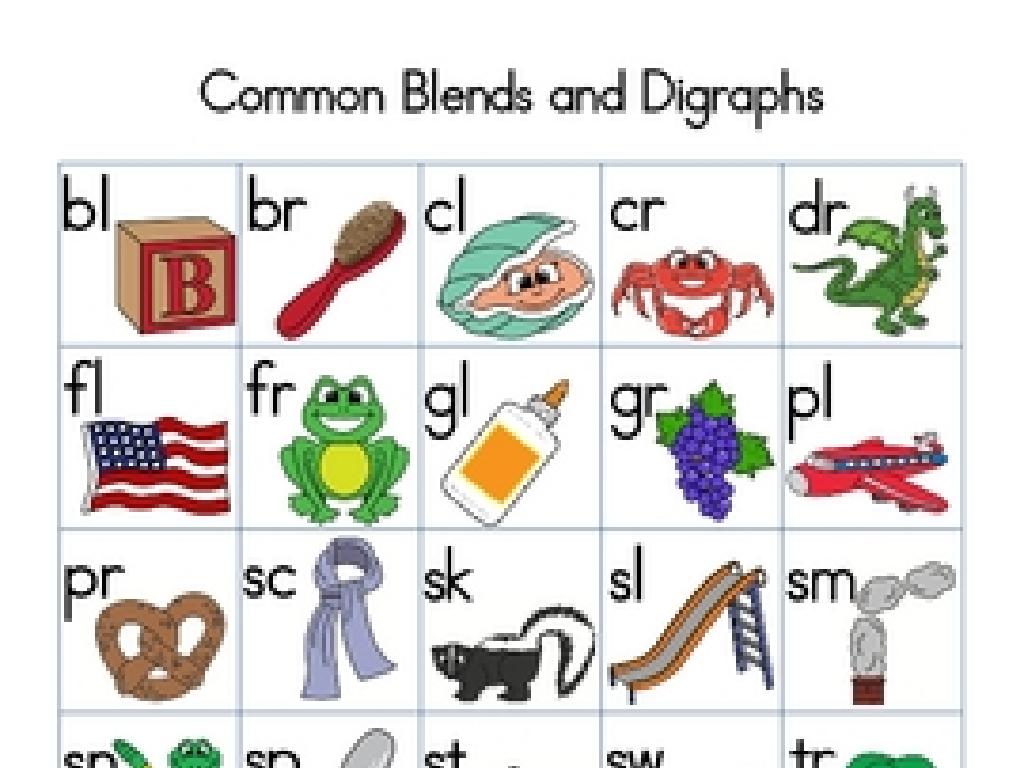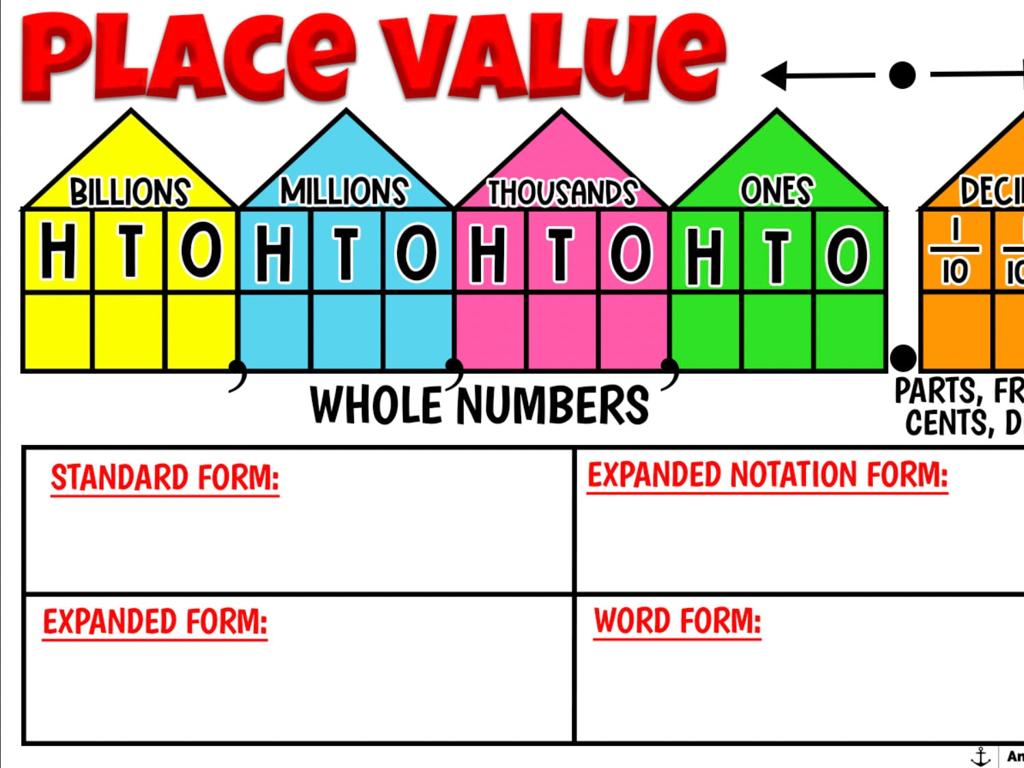Evaluate Numerical Expressions Involving Integers
Subject: Math
Grade: Seventh grade
Topic: Operations With Integers
Please LOG IN to download the presentation. Access is available to registered users only.
View More Content
Evaluating Numerical Expressions with Integers
– Grasp the concept of integers
– Integers include positive, negative numbers, and zero
– Today’s focus: Integer expressions
– We’ll evaluate expressions like 3 + (-5) * 2
– Objective: Master integer operations
– Learn addition, subtraction, multiplication, division with integers
– Applying rules to solve problems
– Use PEMDAS to evaluate expressions correctly
|
This slide introduces the concept of integers and sets the stage for understanding how to evaluate numerical expressions involving them. Integers are the building blocks of math, encompassing whole numbers, their opposites, and zero. Today, we’ll focus on how to correctly apply the rules of operations addition, subtraction, multiplication, and division to solve mathematical problems with integers. Emphasize the importance of the order of operations (PEMDAS) in evaluating expressions correctly. Provide examples and practice problems to reinforce the concept. Encourage students to ask questions and work through problems together to solidify their understanding.
Understanding Integers in Math
– Define integers
– Integers include whole numbers, their negatives, and zero.
– Positive & negative examples
– Positive integers: 1, 2, 3; Negative integers: -1, -2, -3.
– Zero: The neutral integer
– Zero is neither positive nor negative but is an integer.
– Integers in expressions
– Integers are used in expressions like 3 + (-2) = 1.
|
Introduce the concept of integers as the set of whole numbers, their opposites, and zero. Provide clear examples of positive and negative integers to illustrate the concept. Emphasize that zero is a special integer that is neither positive nor negative. Explain how integers can be used in numerical expressions, which is a foundational skill for understanding algebra. Encourage students to think of real-life situations where they use integers, such as temperatures above and below zero, or floors above and below ground level in a building.
Integer Operations Overview
– Review addition of integers
– Use number lines for visual aid
– Review subtraction of integers
– Subtracting is adding the opposite
– Review multiplication of integers
– Positive x Positive = Positive, Negative x Negative = Positive
– Review division of integers
– Dividing integers follows the same sign rules as multiplication
|
This slide is a quick recap of the basic operations with integers, aimed at solidifying the foundational concepts for seventh graders. When reviewing addition, emphasize the use of number lines to visually represent the process. For subtraction, remind students that subtracting an integer is the same as adding its opposite. Multiplication review should reinforce the rule that the product of two integers with the same sign is positive, while different signs result in a negative product. Lastly, division should be taught with the understanding that it follows the same sign rules as multiplication. Provide examples for each operation and encourage students to solve them to ensure comprehension.
Rules for Integer Operations
– Adding integers with same sign
– Keep the sign, add the absolute values. Example: (-3) + (-2) = -5
– Subtracting integers with same sign
– Keep the sign, subtract the smaller from the larger. Example: (-7) – (-2) = -5
– Rules for different sign operations
– Add absolute values, keep the sign of the larger. Example: (-3) + 4 = 1
– Multiplying and dividing integers
– Same signs result in a positive, different signs result in a negative. Example: (-2) * 3 = -6, 4 / (-2) = -2
|
This slide introduces students to the fundamental rules for performing operations with integers. Emphasize that understanding the sign of the numbers is crucial before performing any addition or subtraction. When the signs are the same, the operation is straightforward, but when they differ, students must consider the absolute values to determine the result. For multiplication and division, the key takeaway is that like signs result in a positive product or quotient, while unlike signs result in a negative outcome. Provide plenty of practice problems to reinforce these concepts and ensure students are comfortable with these operations before moving on to more complex expressions.
Evaluating Expressions with Integers
– Understand PEMDAS
– PEMDAS: Parentheses, Exponents, Multiplication/Division, Addition/Subtraction
– Apply integer operation rules
– Use PEMDAS to solve expressions step by step
– Example: -3 + (2 × 5) – 8 ÷ 4
– First, calculate inside parentheses: 2 × 5 = 10. Then, -3 + 10 – 8 ÷ 4
– Practice with similar problems
– Solve -3 + 10 – 2 = 5. The expression evaluates to 5.
|
This slide introduces students to the concept of evaluating numerical expressions with integers, emphasizing the importance of following the order of operations, known as PEMDAS. It’s crucial for students to understand that operations within parentheses take precedence, followed by exponents, and then multiplication and division from left to right, and finally addition and subtraction from left to right. The example provided demonstrates how to apply these rules. Encourage students to work through the expression step by step, and after understanding the process, give them similar problems to practice. This will help solidify their understanding of evaluating expressions with integers.
Let’s Practice Together: Evaluating Expressions
– Solve 7 – (-3) × 2
– Subtracting a negative is like adding: 7 + 3 × 2 = 13
– Evaluate (-4)² ÷ 8 + 6
– Square first, then divide, lastly add: 16 ÷ 8 + 6 = 8
– Step-by-step walkthrough
– We’ll go through each step together in class
– Apply integer operation rules
|
This slide is designed for a class activity where students will practice evaluating numerical expressions with integers. Start by solving the first example on the board, illustrating how subtracting a negative number is the same as adding its positive counterpart. Then, move on to the second example, emphasizing the order of operations: squaring the number before dividing and finally adding. Encourage students to follow along and solve the problems in their notebooks, applying the rules for operations with integers. After the walkthrough, ask students to try similar problems on their own to reinforce their understanding. Provide immediate feedback and support as needed.
Common Mistakes in Integer Operations
– Remember the order of operations
– Use PEMDAS: Parentheses, Exponents, Multiplication/Division, Addition/Subtraction
– Keep addition and subtraction rules straight
– Addition of integers has different rules than subtraction, don’t confuse them
– Pay attention to signs in multiplication/division
– The sign of the answer changes depending on the signs of the numbers you multiply or divide
– Practice with varied expressions
|
This slide aims to highlight frequent errors students make when evaluating numerical expressions with integers. Emphasize the importance of the order of operations, often remembered by the acronym PEMDAS, to avoid calculation mistakes. Clarify the rules for adding and subtracting integers, as they differ and can easily be mixed up. Stress the significance of considering the signs when multiplying or dividing integers, as they determine the sign of the result. Provide practice problems that mix these concepts to ensure students can apply the rules in various contexts. Encourage students to double-check their work for these common errors.
Class Activity: Integer Expression Challenge
– Pair up and solve integer expressions
– Share solutions with the class
– Discuss various solving methods
– Compare strategies like number lines, rules of signs, etc.
– Reflect on different solutions
– Understand there can be multiple ways to reach the same answer
|
This activity is designed to promote collaborative learning and critical thinking. Students will pair up to work on a set of integer expressions, encouraging peer-to-peer learning. After solving the problems, each pair will present their solutions to the class, fostering a sense of community and shared knowledge. During the discussion, encourage students to explore different methods such as using number lines, applying the rules of signs, or other strategies they might have developed. This will help them see the diversity in problem-solving approaches and understand that different methods can lead to the same correct answer. Provide guidance and support as needed, and ensure that each student feels comfortable sharing their thoughts and strategies.
Homework: Mastering Integer Operations
– Complete Integer Expressions Worksheet
– Practice with real-world scenarios
– Apply integers to situations like temperature changes or bank transactions
– Review for upcoming Integer Operations Quiz
– Quiz will cover addition, subtraction, multiplication, and division of integers
– Aim for understanding, not just completion
|
This homework assignment is designed to reinforce the students’ understanding of integer operations. The worksheet will provide structured practice, while the real-world scenarios will help them see the practical applications of integers. Encourage students to not only complete the tasks but also to ensure they understand the concepts, as this will be crucial for the quiz in the next class. The quiz will assess their ability to perform all operations with integers. Provide tips on how to study for the quiz, such as reviewing class notes, re-doing classwork problems, and asking questions about anything they find challenging.
Wrapping Up: Integers and Expressions
– Review of integer operations
– Summarize addition, subtraction, multiplication, division of integers
– Significance of practice
– Regular practice solidifies understanding
– Focus on details is key
– Careful with signs and PEMDAS
– Keep learning and growing
– Embrace challenges, ask questions
|
As we conclude today’s lesson on evaluating numerical expressions with integers, it’s crucial to recap the operations of addition, subtraction, multiplication, and division. Emphasize the importance of consistent practice to master these concepts. Remind students to pay close attention to the details, such as the signs of numbers and the order of operations (PEMDAS), as these are common areas for mistakes. Encourage students to maintain a positive attitude towards learning, to not be discouraged by challenges, and to actively seek help when needed. Motivate them to continue practicing and exploring more complex problems to further their understanding and skills in mathematics.






